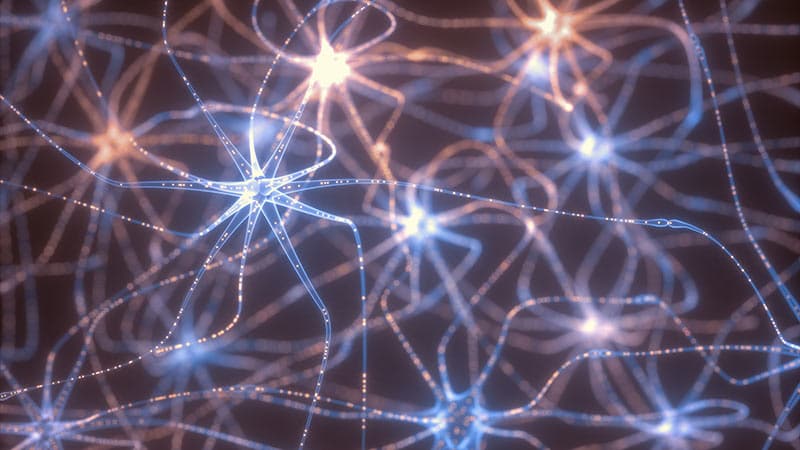Is It Possible That The Tandem Union Of Light And Heat Are The Gatekeepers To Creative Flow?
Creativity can at times seem elusive, as if we have to quickly catch the tail of the tiger before the muse vanishes from before our eyes. What if there was a system, a way to tap into creative flow systematically, that could, with certainty, be repeated and replicated as needed?
At first glance it may seem absurd to think that sauna bathing would have anything to do with enhancing the creative process. It does not, however, take much digging to find that historically humans as a species have turned to sauna therapy to purify the body and to find commune with creative power. Across distant lands, and through time, the homosapien has turned to a variety of heat therapy modalities to accentuate their spiritual and creative connection.
The advent of modern biology can now explain why models of heat therapy have been so wildly compelling for the creative mind. From sweat lodges, to traditional Finish saunas, to the dugouts of East Africa, we have collectively as a species found healing, both of the body, mind, and spirit through intense perspiration.
Moreover, connection to the realm of the unseen is the essence of what allows the human vessel to render thought, ideas, and artistic visions into form. The criteria for creative outflow is to ensure that there is a fluid connection between consciousness and body. The human must be rendered a healthy and open vessel for creative flow to occur.
The journey of this article will allow us to illuminate the scientific findings on what happens to the nervous system while engaged in sauna bathing to enable heightened states of creativity, how the broad band of infrared light effects neurological health and cognitive ability through the process of photobiomodulation, methods to improve and stabilize mood through color light therapy, and finally meditative techniques and breath work that can be used while in the sauna to further expand the capacity for creativity.
The Autonomic Nervous System And Creativity: Heat May Guide The Way Back To Creative Flow

Defining Creative Insight:
According to the National Institute Of Health in their 2016 published journal on creativity and the mind-body connection, creativity can be defined in the following manner:
“Creative insight (CI) has been extensively investigated in psychology and cognitive neuroscience, which is defined as the process in which impasses the solver encountered are broken by restructuring and then leads to a peculiar experience accompanying the sudden solution.” (1)
Creativity appears to be an intrinsic characteristic of the human experience, with solutions seeming to almost fall from the sky into mind’s eye. Regardless of the roles played in contextual life, without exception every individual relies on the powers of creativity to move through life’s challenges, to render ideas into shared reality, and to form relational connections with others.
Is it possible to predict and systematize the creative process? If so, what measures can be taken to ensure that creative flow occurs in predictable and reprical ways?
Autonomic Nervous System – Two States Of Being
Adaptive evolution has ensured that the autonomic occurrences within human physiology have developed in such a way to ensure survival as circumstance necessitates, as well as promoting the expression of creativity as the external stage permits.
The autonomic nervous system is subdivided into two primary branches, scientifically labeled, Sympathetic dominance and parasympathetic dominance. These two branches determine the state of being of the entire individual from biochemical reactions, neurotransmitter activity, hormonal secretion, immune response, and even the quality of thoughts that are generated. (2)
The adaptive quality of sympathetic dominance is outstanding in its ability to ensure the survival of our species both individually and collectively. This branch can be synonymously called states of survival, fight or flight, or stress response. (2)
For example, if our ancestors found themselves under immediate external threat, a predator stalking the entrance to our cave, within a fraction of a second a cascade of biological reactions occur to ensure our survival from this situation. The biochemistry of the body changes within a blink of an eye in preparation to fight the predator or to flee the scene.
Some of the physical transformations that occur include, heart rate elevation, external sensory perception is heightened, pupils dilate, breathing quickens, adrenaline and cortisol are released, and all available energy is directed toward either fighting the threat or running away, hence the term fight or flight. (2)
In addition to the physiological changes that occur in reaction to the external threat, thought forms are also affected. This is a good thing, it means that immediately the mind starts generating ‘worst case scenario thinking’ as a means of protection against an imminent threat. Using the example of a predator outside the cave entrance, the mind of the individual under threat begins immediately to consider all available exit strategies, what weapons might be available, essentially what to do given the worst case scenario if the predator enters the home. This type of survival thinking is critical when danger is immediate and real.
While the body is threatened, this is not a time to heal lingering infections, rejuvenate vital life force, or to create. This is a time to survive.
Ideally, the threat would be conquered either through battle or running away. Once safety was found the autonomic nervous system would transfer out of stress response back to states of safety known as the parasympathetic dominance.
The autonomic nervous system affects not only the biochemical make-up, but also the quality and type of thoughts that are generated.
While states of survival are hugely valuable when a real threat is imminent, what happens, if the autonomic nervous system is not able to find homeostasis, and individuals remain in fight or flight for long periods of time?
Unfortunately, healing of the physical body does not occur, and the mind continues with ‘worst case scenario thinking’, which is the antithesis of creative flow.
So, how does the autonomic nervous affect creativity?
Once greener pastures are found, ideally states of being are transferred back to rest, relaxation, digestion, and into states where wound healing and cellular regeneration can begin to occur. In addition, thought forms are also affected by this biological change. Once there is no longer a threat, thoughts themselves become internally oriented and creative.
Creativity occurs when the mind becomes expansive, when imagination is more real than outer circumstances. Fight or flight causes the mind to narrow its focus on potential danger, conversely states of relaxation allow the mind to broaden and become more receptive to creative flow.
If individuals find themselves in prolonged states of stress, response creativity will be affected. What happens then, if individuals are stimulated into survival response day after day, to threats that are both real and imagined? Two things begin to occur, the body begins to sink into illness, and the quality of thoughts produced by the survival brain continue to generate ‘worst case scenario thinking’, and there is no longer an internal climate ripe for creativity.
Fundamental to creative thought is the ability of the autonomic nervous system to find balance. In a fast paced modern world, many individuals experience surges of adrenaline day after day. The call to action for individuals looking to augment creative expression therefore is the ability to remain or shift back into parasympathetic dominance.
Sauna bathing provides a sanctuary space of relaxation for the autonomic nervous system to effortlessly slip back into states of rejuvenation, regeneration, and creativity.
Sauna Therapy And Parasympathetic dominance: Opening The Vessel Of Creativity
Heat embraces the body and draws the autonomic nervous system out of survival back into states of relaxation and trust. Slipping into a hot tub, leaning back against the benches of a steam room, or closing the eyes as the heat of a traditional sauna encompasses the body, has the effect of immediately releasing tension held in the muscles as the mind and body are soothed and comforted.
It does not take extensive scientific research to convince most of us that heat is relaxing. Nevertheless, it takes but a few short moments in a sauna for the autonomic nervous system to easily slip out of stress response back into states of rest and relaxation.
Published by Science Direct, in the journal of Cardiology, the article describes an extensive study performed on individuals living with cardiac and vascular disorders and their response to Waon therapy (the warming of the entire body using heat therapy), here is the conclusion of this study:
“Repeated Waon therapy improved cardiac function and normalized cardiac autonomic nervous activity by increasing parasympathetic and decreasing sympathetic nervous activity in CHF (chronic heart failure) patients.” (4)
Through a variety of heat therapy modalities, the balance of the autonomic nervous system is fostered. The nourishment of the autonomic nervous system directly correlates with the creative faculties of mind by rendering the body into states of relaxation, where thoughts themselves become more expansive and connected to imagination and solution.
It is no wonder that humans, regardless of time in history, cultural background, or geographical location have found solace in sauna bathing. Spiritual ritual and sauna bathing have often been in tandem association, the ability to access information from the realm of the unseen was no secret to our ancestors.
It may not be necessary or appropriate to engage in the rituals of the sweat lodge, or other cultural landmarks, where heat therapy is central. However it is possible through sauna bathing alone to sublimate thought forms to access greater levels of creative processing.
Sauna bathing will give the nudge the autonomic nervous system requires to easily slip out of survival back into states of profound relaxation where creative thoughts abound.
Photobiomodulation And Cognitive Function

The origins of creativity may remain somewhat mysterious as folklore links the process to more ethereal models, such as the Muse or Genius who assume a personified role of external entities communicating from outside realms to inspire the human mind.
Regardless of perspective, whether it be a strictly materialistic view on creativity or a more ethereal one, there is with certainty the need to render the brain healthy and coherent in order to perform the full process of creative endeavor.
While it is true that a variety of heat therapy modalities are effective in balancing the autonomic nervous system, it is also true that the addition of specific therapeutic light to heat therapy protocol will produce even greater results on cognitive function. Therefore, the optimization of both modalities, heat and light will demonstrate compound results on creativity.
What Is Photobiomodulation And How Does It Affect Neurological Function?
Certainly the term photobiomodulation (PBM) is quite a mouthful, and its process may appear complex at first glance. PBM is the process by which red light, near, mid, and far infrared light affect a positive change in the metabolic system of cells.
PBM is not thermal therapy, meaning it relies on the wave patterns of light as they interface with the coding of human cells to positively affect the energy manufacturing centers of the cells. When specific light frequency is applied, in therapeutic doses to diseased or malfunctioning tissues of the body, through the mitochondrial engagement with light, it is possible to produce resounding healing results to tissues, and entire systems of the body. (5)
When exposed to red, near, mid, and far infrared light brain cells, like other cells in the human body, absorb the photons emitted by this range of light frequency into the inner lining of the membrane of the mitochondria (energy conversion center of the neuron). This positively affects the cellular metabolic function. (5)
How does improved neuronal metabolic function correlate to heighten states of creativity?

Michael R. Hamblin’s journal published by the National Center For Biotechnology Information describes PBM in the following way:
“Photobiomodulation (PBM) describes the use of red or near-infrared light to stimulate, heal, regenerate, and protect tissue that has either been injured, is degenerating, or else is at risk of dying. One of the organ systems of the human body that is most necessary to life, and whose optimum functioning is most worried about by humankind in general, is the brain.” (6)
By increasing neuronal metabolic function, cerebral oxygenation occurs. As the brain is immersed in more oxygen, cognitive function is improved. (6) For anyone who has ever tried to solve a problem, write, paint, or invent, they know well that a foggy mind is the antithesis to creative function.
PBM fosters the health of all cells in the human body, however when it comes to creativity, the effect that this form of light therapy has on brain function is unparalleled.
The orchestra of red and infrared light beaming around and bathing the body from the inside out married with the effects of heat therapy on the autonomic nervous system may form an unrivaled recipe for tapping in and tuning into creative flow!
Infrared Sauna Bathing Ties The Two Allies Of Creativity Together
When ancient wisdom and tradition finds itself at the nexus point of technological advancement a precious gem is revealed, the infrared sauna. The process of creative insight separates humans from other creatures of the earth to create an axis point of the imagination and the material.
Rather than waiting for creativity to happen to us, we can take specific steps to foster it. The path of the creative is nothing new, and like many who came before, the modern innovator can turn to heat and light therapy at the same time to stoke the creative fire.
Broad spectrum infrared sauna therapy combines the positive effects of heat therapy on the autonomic nervous system with the power of photobiomodulation on neuronal activity. If color therapy can be integrated into the infrared sauna experience, mood may also be elevated.
Mood, Creativity, And Color Light: A Neurotransmitters Narrative
Chromotherapy, or color light therapy, positively affects neurotransmitter activity to stabilize and uplift mood. Serotonin uptake is improved with exposure to medical grade color light. The pineal and pituitary glands are strongly affected by exposure to light. A lack of light can potentially erode the mood centers of the brain. Serotonin is not only important for mood stability, it is also the precursor to melatonin production in the pineal gland. (7)
By improving serotonin uptake through color therapy, sleep, through the release of higher amounts of melatonin, will deepen and become more restorative. There is nothing like a good night’s sleep to upgrade productivity. When sleep eludes the creative individual, it can feel as the mind itself is flat and without spark.
Color light therapy may help to stabilize mood, and improve the quality of sleep.
The brain and body’s ability to absorb the color light spectrum is magnified when done in conjunction with the infrared light spectrum. The frequency of infrared light waves becomes the giant upon which color light might ride, similar to a surfer moving gracefully with the power and momentum of the ocean’s waves. (8)
Meditation, Infrared Sauna Bathing, And The Veil Of Creativity

The authors of the National Institute of Health’s 2016 journal on the correlation between the autonomic nervous system and creativity states the following:
“Meditation, for example, is known to be one method of integrative body-mind training that can improve CI (creative insight) performance and that can be linked to the interaction of the central and autonomic nervous system.” (1)
Once the stage has been set, and the oasis of an infrared sauna with color light therapy is ready for use, how individuals looking to boost creativity use their sauna can positively affect productivity in this realm.
Sauna bathing can provide an excellent space to begin or deepen a meditative practice.
Expert Tip For Meditation In Your Sauna:
- Begin your sauna lying on your back on the bench with legs up the wall. This will allow the low back to be supported entirely with the specific purpose of relaxing the psoas muscle that lines the back of the pelvis. As the psoas muscle relaxes a signal is sent to the autonomic nervous system to transfer out of sympathetic dominance back to states of relaxation.
- Draw both hands over the navel space, uniting the thumbs above the belly button as the two index fingers connect to form a triangle pointing toward the pubic bone. This will help to draw breath down into the depths of the belly as you feel the movement of breath below your palms.
- Inhale deeply through the nose, draw breath down to expand the belly.
- Once breath has been elongated and deepened you are ready to enter a creative meditation.
- If it pleases the practitioner the blue tooth speakers can be used to put on either a guided meditation or relaxing music tuned to 432 hz. This will influence brain waves to drop out of high beta, to alpha, and hopefully into theta.
- Linger here in this emotional and physical posture for as long as it is comfortable.
Active meditation allows brain waves to enter into a pattern that fosters creative thought (9). It can be helpful to have a pen and paper nearby in the event that an intellectual download occurs while in the sauna space.
Meditation is relaxing, but moreover, is critical for the creative mind to journey into the internal landscape where the imagination can inform the flow of thoughts.
Tune Into Your Creativity Systematically With Infrared Sauna Use
The revelatory effects of sauna bathing on the creative process was no mystery to our ancestors who walked the earth many thousands of years ago. The evolution of biology and physics can now explain why humans have turned to heat therapy since before recorded history to reconnect to creative power.
Creativity can be unleashed by follow specific protocol:
- Establish a heat therapy model that is readily accessible
- Combine heat with red and infrared light to promote photobiomodulation and ultimately harness the power of the brain and high functioning cognition
- Couple heat, infrared light, and color light to improve sleep and stabilize mood
- Complement your sauna experience with deep breathing and meditative practice.
No longer does the creative individual need to wait in vain for the creative spark to occur. By inviting sauna bathing into your daily experience, a system to induce the creative process can be found, and moreover replicated.
It is the splendid concert of light, heat, and meditation that may unlock the door to your creative flow!
Sources Cited:
- https://www.ncbi.nlm.nih.gov/pmc/articles/PMC5005334/
- https://www.ncbi.nlm.nih.gov/pmc/articles/PMC1959222/
- Breaking the Habit Of Being Yourself: How To Lose Your Mind And Create A New One, Dr. Joe Dispenza, 2015, February
- http://www.waon-therapy.com/pdf/archivement/english/en_2011_01.pdf
- https://www.litecure.com/about-photobiomodulation/
- https://www.ncbi.nlm.nih.gov/pmc/articles/PMC5066074/
- https://www.ncbi.nlm.nih.gov/pmc/articles/PMC4317125/
- https://www.ncbi.nlm.nih.gov/pmc/articles/PMC4870908/
- https://www.sciencedaily.com/releases/2010/03/100319210631.htm

